What is one thing all hyper-growth SaaS companies have in common?
“A growth team that takes risks and looks for outlier effects,” says Guillaume “G” Cabane, Co-Founder at Hypergrowth Partners, a collective of advisors, VPs, and others working on an equity basis with companies like Maze, ramp, and Honeycomb.io.
In this week’s Workshop Wednesday, held every Wednesday at 10 a.m. PST, G shares low CAC, scalable tactics for earlier growth-stage startups.
How Fast Is “Hyper-Growth?”
On the chart below, you’ll see obvious examples like Shopify, Twilio, and Slack. Cabane has included companies he’s been directly involved in, like Gorgias, Drift, and Ramp.
You’ll see that ramp is the outlier, going from $10M to $100M in one year. That’s 10x YoY.
The one thing they all have in common?
A growth team that takes risks and looks for outlier effects. That’s important.
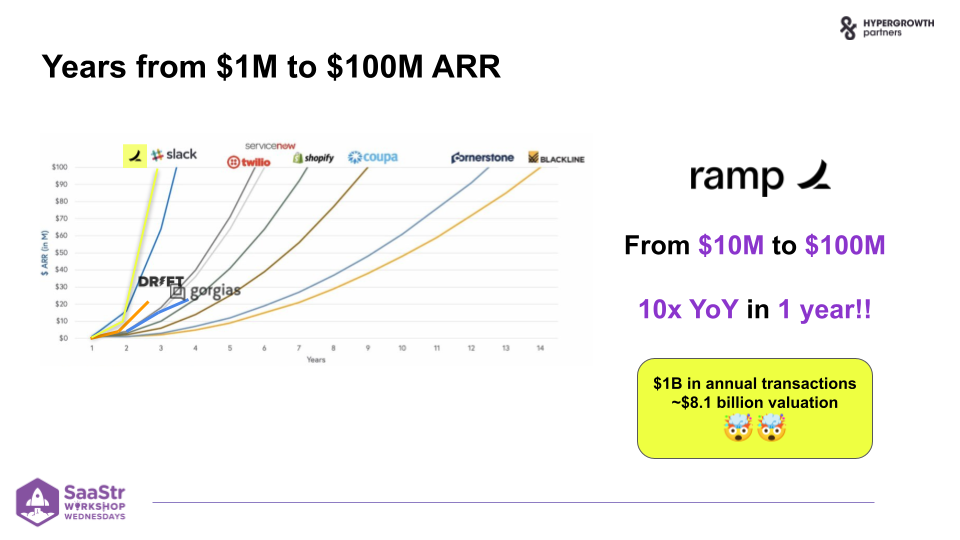
How Can You Grow As Fast As ramp?
By implementing the four components below.
- Low CAC, scalable growth strategies
- Growth engineers (this is super important!)
- MarTech stack and budget (always be on the lookout for cutting-edge platforms)
- A growth mindset
Scalable, Low CAC Growth Strategies
“One example that works well for sales-led SaaS businesses is outbound,” says Cabane. “And no, not your mother’s outbound.” A high-scale, modern outbound has extremely good CAC and scale.
Personalized outbound at scale looks like:
- Accessing a database of your TAM and intent data
- Injecting that data into your emails to create personalized copy
- Automating your entire outbound motion
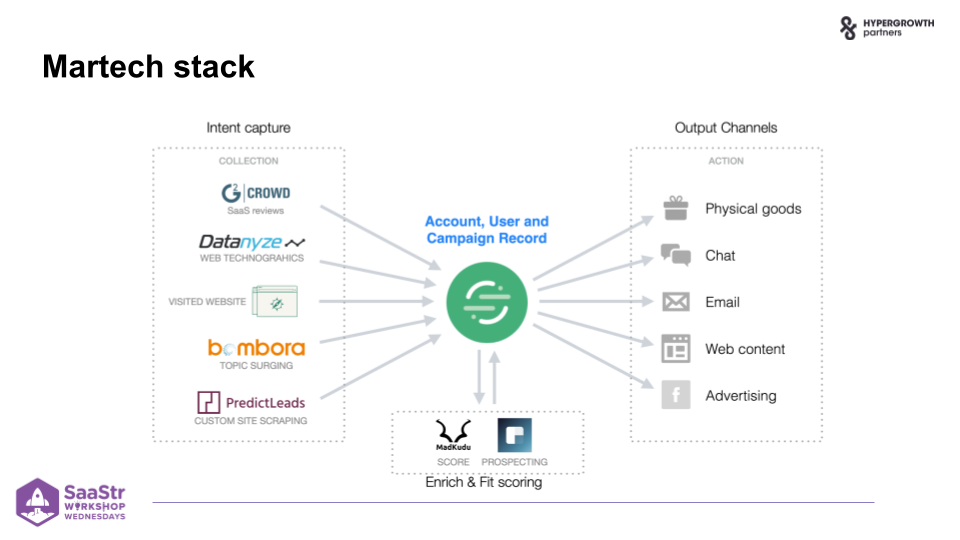
This motion looks similar to the past, but the outcome can look similar to the Martech stack above, which is a few years old yet still relevant.
Why is it still relevant?
Because, as of today, there is still no tool or platform that enables you to do this off the shelf.
How Do You Build a TAM?
Let’s look at an example below from ramp. Their playbook used to have multiple vendors like Zoominfo and Clearbit in order to get company data and, more importantly, contact data.
If they weren’t looking for cutting-edge platforms like Waterfall, they’d still be buying credits with these different vendors.
Now, they get the best coverage data — you want 80-90% coverage data — and Waterfall activates all the vendors into one API or platform at one cost.
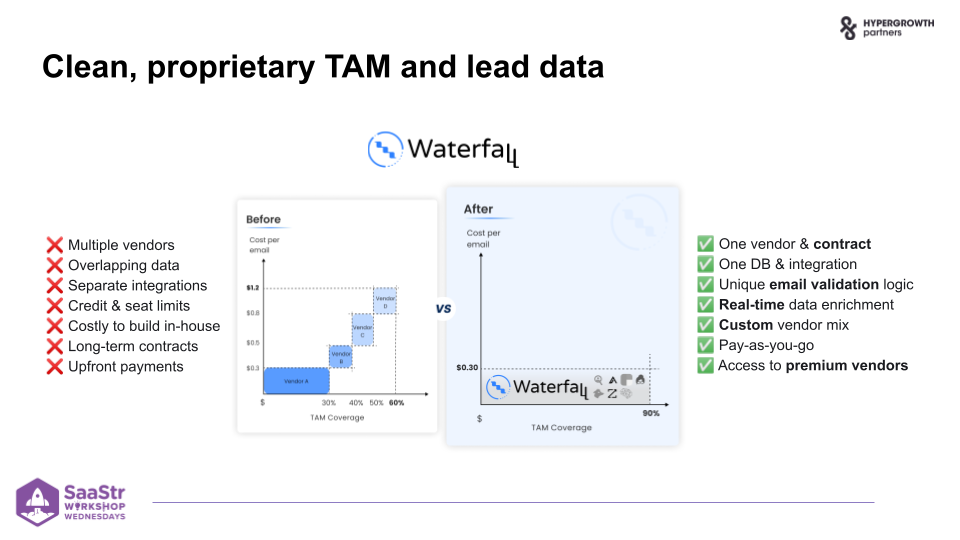
The takeaway?
Technology advantages never last, so you want to look out for and jump on them when you find them.
How do you find technology advantages?
Look in the right places. G shares that he’ll be walking around the SaaStr Annual on September 6-8 in SF and talking to the small new vendors and young teams. Many won’t be a fit, but he’ll find a few gems.
Cold Emails That Actually Work
With AI, creating personalized emails at scale has gotten a lot easier than it used to be. Whereas G used to build out a complex martech stack that was just focused on personalized emails with several different tools (with different subscriptions and costs), now he has his teams use only 1 or 2 AI-backed tools to help their personalized outbound at scale.
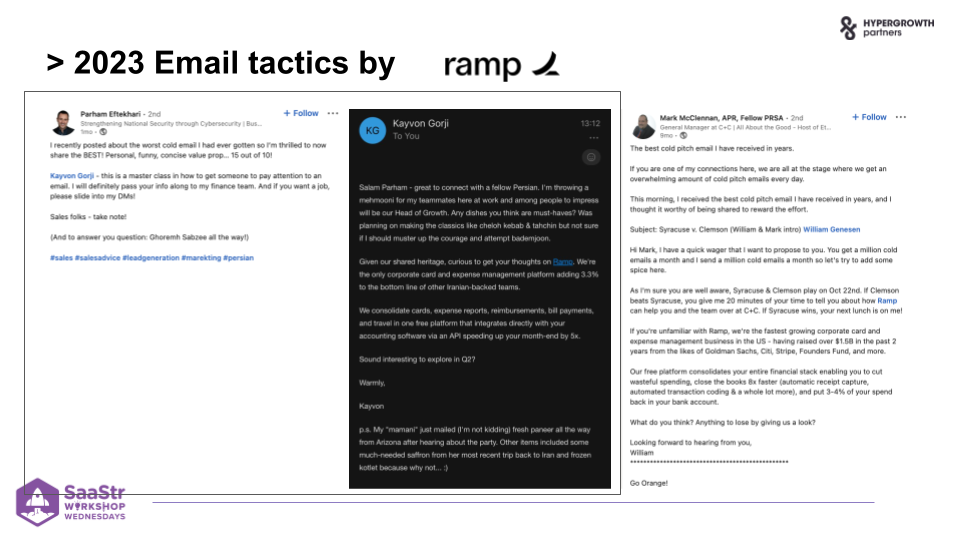
Let’s analyze an example from Ramp, that literally had the prospect on Linkedin sharing how good the cold email was.
Build A Growth Team After You Have Product Market Fit
The job of growth teams is to experiment and fail at least 70% of the time. The role of marketing teams is to succeed, ideally 100% of the time. So when do you hire a growth team at an early-stage startup?
You don’t need a growth team until after you have product market fit. If you can’t get someone to pay for your product, there’s no need to try and scale that. You need to focus on product first.
What does your team structure look like initially?
Typically, you want a three-person team — a growth pm/analyst with a banking or consultancy background, a front-end engineer, and a marketer to do all the copywriting. That’s sufficient to start doing some experiments.
“Do not skip the engineer,” Cabane impresses.
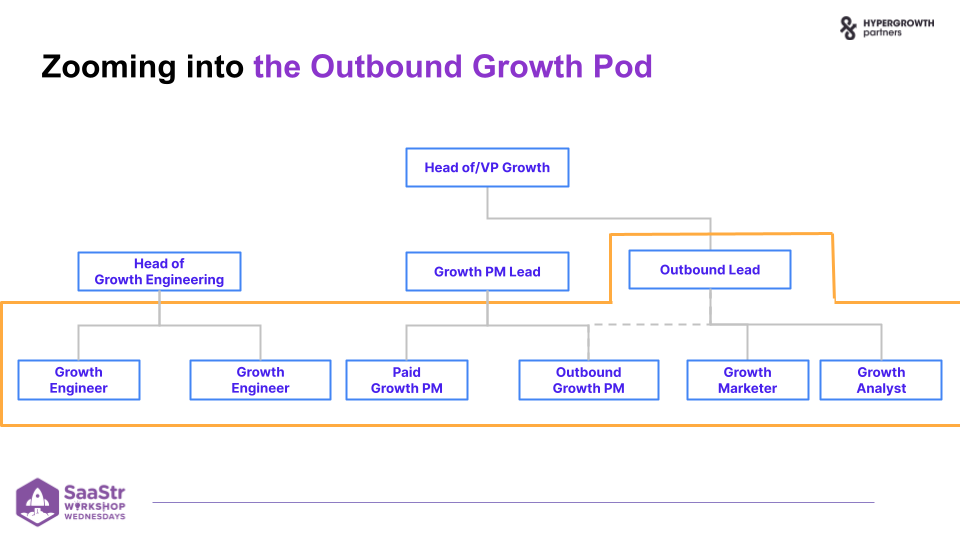
The Growth Mindset
“I don’t think there’s a 10x marketer in most companies, so you need a different mindset using different resources and tools,” Cabane shares.
You want a mindset of an angel investor, an early-stage investor. You need to ship a lot of experiments in order to have a few outliers.
You likely won’t come up with the one experiment out of one that will work great. Try twenty things, and you’ll very likely have one or two that are strong.
Separate the growth marketing team from the core product and marketing because you’ll be operating differently.
An early-stage investor with a lot of things cooking at the same time without a lot of information will need to operate differently than a marketing team that can’t afford to fail and needs to succeed almost every time.
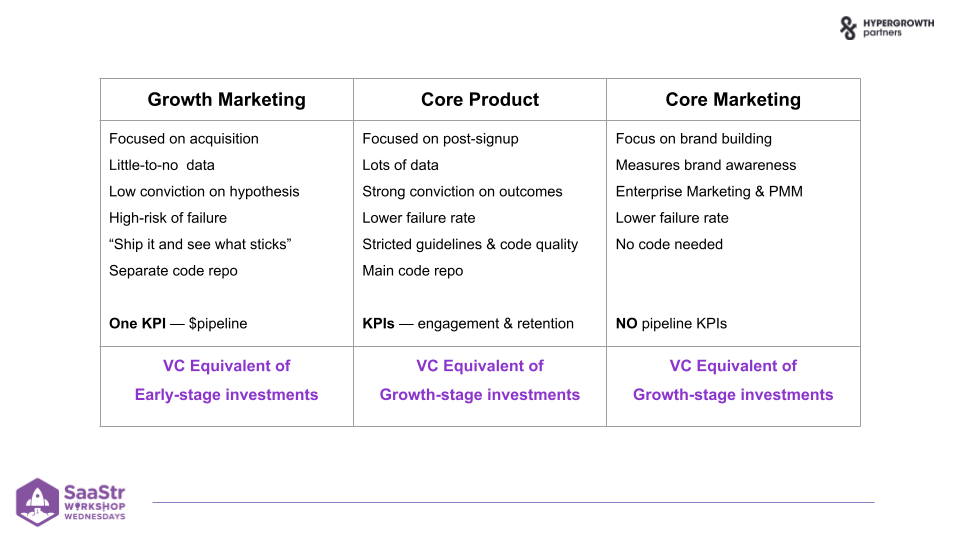
You Can’t Accelerate The Buying Cycle
Two bonus insights Cabane has learned during the past twenty years working with hyper-growth companies are:
- You can’t accelerate the buying cycle.
- Be very realistic about loss rates.
At Segment, they were good at predicting who was deploying in warehouses, so they started dripping them before realizing they weren’t mentally ready. You can’t accelerate the buying cycle, but you can put them on a timeline and provide useful content for 100% coverage on those people when they come in market.
And when you lose a customer to a competitor, you always need to figure out if it was a failure of growth and marketing or product and sales. Figure out why you lost a company and what signals you missed. Map it all out.
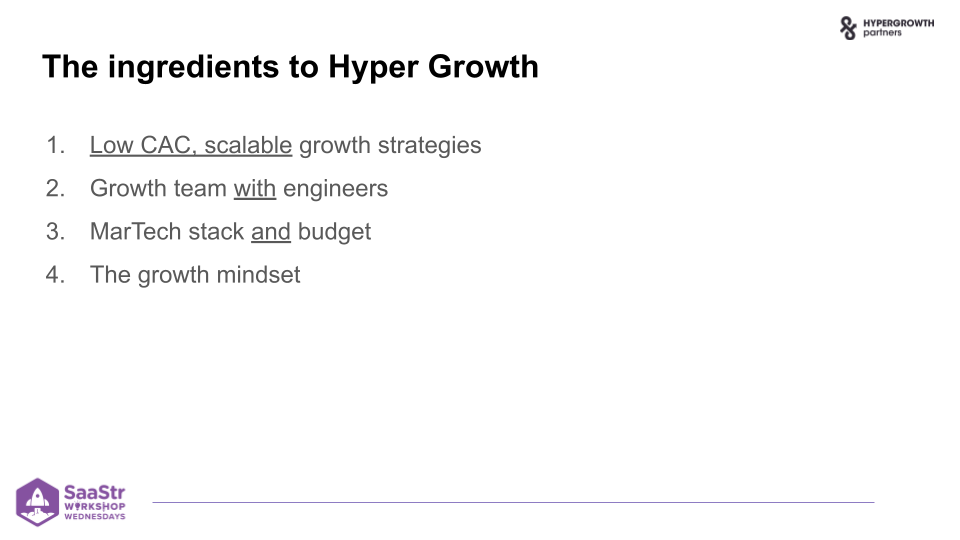
Key Takeaways
The four secrets to sustainable low CAC growth are:
- Invest your budget in the right tech stack.
- Focus your limited resources on low CAC and scalable growth tactics.
- Run growth like a product team focused on a marketing scope with sales KPIs.
Keep investing in a high-risk/high-reward growth mindset beyond series B. Success comes from taking those risks.

